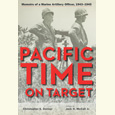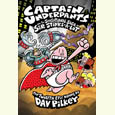A Touchstone for Leaders and Citizens Alike
Legendary historian Doris Kearns Goodwin talks with Chapter 16 about her new book, Leadership in Turbulent Times
In her latest book, Leadership in Turbulent Times, Doris Kearns Goodwin reflects on the lives of four former presidents—Abraham Lincoln, Theodore Roosevelt, Franklin Roosevelt, and Lyndon Johnson—and asks how each forged their character, responded to great challenges, and led the nation through a period of crisis. It is a book with obvious lessons for today.
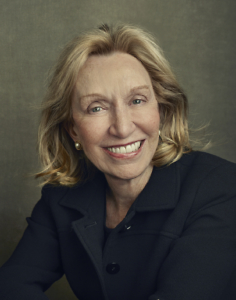
Few writers possess Goodwin’s ability to bring American political history to life. No Ordinary Time, about Franklin and Eleanor Roosevelt during World War II, won the Pulitzer Prize in History. The Bully Pulpit—a history of Theodore Roosevelt, William Howard Taft, and the first decade of the Progressive Era—won the Carnegie Medal. Team of Rivals, about Abraham Lincoln and his advisers, won the Lincoln Prize and served as the basis for the Steven Spielberg film Lincoln. Goodwin’s first book, Lyndon Johnson and the American Dream is now a classic and will be re-released next spring.
Prior to her Nashville event on October 28, Goodwin answered questions via email from Chapter 16:
Chapter 16: Throughout your career, you have written about American history while also lending insight into contemporary politics. How might this book help us navigate our own turbulent moment in American history?
Doris Kearns Goodwin: We have to remember these are not the worst of times. Imagine Abraham Lincoln entering office with the country split in two, with a civil war that would leave more than 600,000 dead about to begin. He said if he had known what he would face he wouldn’t have thought he could have lived through it.
Imagine Theodore Roosevelt thrust into office by the assassination of William McKinley at a time when the conflict between the rich and the poor, the capitalists and the wageworkers, was so intense that talk of revolution was in the air.
Imagine Franklin Roosevelt coming into power when the Great Depression hit rock bottom. He feared the whole house of cards might collapse before he could take the oath of office. The future of capitalism was at risk.
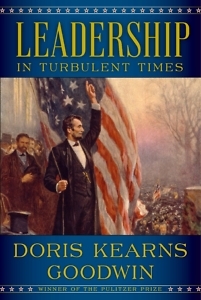 Imagine Lyndon Johnson taking office in the wake of Kennedy’s assassination, when racial issues threatened to tear the country apart and Kennedy’s civil-rights bill hung perilously in the balance.
Imagine Lyndon Johnson taking office in the wake of Kennedy’s assassination, when racial issues threatened to tear the country apart and Kennedy’s civil-rights bill hung perilously in the balance.
At each crisis moment, healing change percolated from aroused citizens joining together in a moral purpose. It was the antislavery movement and the Union Army, Lincoln insisted, that had done it all. It was the progressive movement and the civil-rights movement that laid the foundations for Teddy Roosevelt’s Square Deal, FDR’s New Deal, and LBJ’s accomplishments on civil rights.
We must remember, as Franklin Roosevelt said, that problems created by man can be solved by man, so long as we pull together toward a common end.
Chapter 16: You worked for Lyndon Johnson in the White House and later helped write his memoirs. Did this firsthand contact with such a towering, tragic figure shape your understanding of presidential leadership?
Goodwin: Yes, it is absolutely true that my fascination with the presidency took root when I was a twenty-four-year-old White House Fellow. I worked for LBJ in the White House and then went down to the ranch to help him on his memoirs. It was such an honor to have spent so many hours with this aging lion of a man—who was able to get both sides of the aisle together to produce an historic raft of legislation: three great civil-rights laws—ending segregation in the South, providing the right to vote to African Americans, ensuring fair housing—plus Medicare, Head Start, immigration reform, PBS, NPR, and much more.
Yet at the time I knew LBJ, his glory days were over. His legacy had been cut in two by the war in Vietnam. He was so sad, and he was candid in ways he never would have been had I known him at the height of his power.
It was that privilege that fired within me the drive to understand the inner person behind the public figure, to look empathetically at each of my subjects as I moved from LBJ to FDR to JFK to Abraham Lincoln and then to Teddy Roosevelt and William Howard Taft.
Chapter 16: During their journeys to the White House, these men faced personal setbacks and grappled with self-doubt. How did these episodes shape their character as leaders?
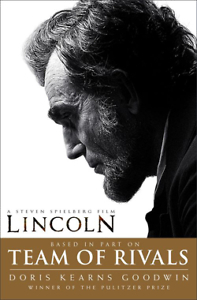 Goodwin: Each of my four guys—as I respectfully call them—kept growing, even through loss and adversity. They developed perseverance and resilience, and through failure and mistakes they developed humility.
Goodwin: Each of my four guys—as I respectfully call them—kept growing, even through loss and adversity. They developed perseverance and resilience, and through failure and mistakes they developed humility.
Abraham Lincoln was only twenty-three when he first ran for the state legislature, but the public statement he made to announce his candidacy is remarkable.
“Every man is said to have his peculiar ambition,” Lincoln began. “I have no other so great as that of being truly esteemed of my fellow men, by rendering myself worthy of their esteem. How far I shall succeed in gratifying this ambition, is yet to be developed.
“If the good people in their wisdom shall see fit to keep me in the background, I have been too familiar with disappointments to be very much chagrined.”
Lincoln made it clear, however, that he was not afraid to fail. Indeed, he would try and try again. Only after being defeated “some 5 or 6 times” would he deem it “a disgrace” and be certain “never to try it again.” When the votes were counted, the little-known Lincoln found he had lost the election. His lack of success, however, “did not dampen his hopes nor sour his ambition.” Two years later, he ran for the state legislature again, and this time, having expanded his contacts throughout the county, he easily won. So right from the start was perseverance, the strength that would accompany every step of his journey to the White House.
If Lincoln’s perseverance proved a core strength, Theodore Roosevelt’s leadership grew because of a growing awareness of his limitations, because he developed the self-reflection and the humility to acknowledge his mistakes, to soften his youthful arrogance.
No one would argue that TR suffered from a lack of confidence. In fact, it was said that he so wanted to be at the center of attention everywhere he went that he wanted to be the baby at the baptism, the bride at the wedding, and the corpse at the funeral.
After his first wildly successful term in the state legislature, Teddy developed, in his own words, a swelled head. “I would listen to no argument, take no advice,” he said. When opposed on an issue, he yelled and pounded his desk, firing back with venom. While his blistering language made great newspaper copy, he soon found himself bereft of support and unable to accomplish any objectives. It began to dawn upon him, he conceded, that he was “not all-important,” that he alone could not get anything done, that “cooperation from other people was essential.”
Moreover, his early experiences in politics broadened both his empathy and the nature of his ambition. When he first went into politics, Teddy later conceded, he was not conscious of going in with the purpose to benefit other people, but rather for the adventure it promised. Yet the more he came in contact with the lives of others—through investigations into factories where child labor was employed, through inspection of decrepit tenements owned by absentee landlords, through his experiences with his fellow soldiers in the army—the more he developed what he called a genuine fellow feeling for others that made him want to improve the conditions of their lives.
As for FDR, his true leadership growth took place in the aftermath of the polio attack that left him paralyzed from the waist down while still in his thirties. During the months and years of striving that lay ahead, accompanied by fear, anxiety, and concealed bouts of depression, he displayed remarkable resilience. Told that his upper body had the greatest likelihood of recovery, Franklin endured punishing exercises to remake his chest and shoulders. Day after day he would ask to be lifted from the wheelchair and set down on the library floor so that he could further exercise his back and arms by crawling around the room. And with every small “win,” Eleanor observed, Franklin felt stronger than before.
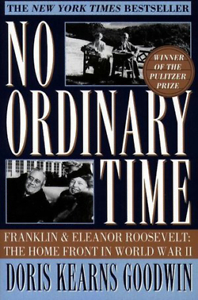 Then, at Warm Springs, the pioneering rehabilitation center Roosevelt built for polio patients, he found psychic recovery by sharing his vulnerability with his fellow patients. He became known as Doc Roosevelt, head counselor, spiritual director, therapy leader. In the warm waters of the giant pool, he aimed not merely to restore the bodies of the patients but to restore the possibility of joy and pleasure in their lives. The paralysis that crippled his body expanded his mind and his sensibilities. “There had been a plowing up of his nature,” Labor Secretary Frances Perkins observed. “The man emerged completely warm hearted.”
Then, at Warm Springs, the pioneering rehabilitation center Roosevelt built for polio patients, he found psychic recovery by sharing his vulnerability with his fellow patients. He became known as Doc Roosevelt, head counselor, spiritual director, therapy leader. In the warm waters of the giant pool, he aimed not merely to restore the bodies of the patients but to restore the possibility of joy and pleasure in their lives. The paralysis that crippled his body expanded his mind and his sensibilities. “There had been a plowing up of his nature,” Labor Secretary Frances Perkins observed. “The man emerged completely warm hearted.”
Chapter 16: Each man served as president during watershed moments in American history: the Civil War for Lincoln, class conflict for Theodore Roosevelt, the Great Depression for FDR, the civil-rights revolution for LBJ. What common principles shaped their leadership through these crises?
Goodwin: While leaders must be fitted for the time, I did identify a certain family resemblance of qualities that these leaders embodied in greater or lesser degree: resilience; humility; an ability to listen to diverse opinions, control negative impulses, replenish energy; and, most importantly, an ambition for greater good. Here are some examples:
• Resilience: The paralysis from polio that crippled FDR’s body expanded his mind and sensibilities.
• Humility: “The man who has never made a mistake,” Teddy Roosevelt once said, “has never made anything.”
• Listening to diverse opinions: in contrast to Lincoln who created a team of rivals to build diverse opinions into his inner circle, FDR had not a single rival for the presidency in his cabinet, but he had a secret weapon in his wife, Eleanor Roosevelt, who was, he proudly said, a welcome thorn in his side, always willing to argue with him, to question his assumptions.
• Controlling negative impulses: when angry at a colleague, Lincoln would write what he called a “hot” letter, which he would then put aside until he cooled down. When Lincoln’s papers were opened at the turn of the twentieth century, historians discovered a raft of such letters, with Lincoln’s notations underneath: “never sent and never signed.”
• Replenishing energy: in our 24/7 world we find it hard to relax, to shake off anxiety. Yet in the midst of the Civil War, Lincoln went to the theater more than a hundred times. When the actors took the stage, he was able to surrender his mind into other channels of thought.
• Ambition for a greater good: Lyndon Johnson could be a difficult boss, but what allowed his staff to endure his overbearing behavior was the sense that by hitching their lives to LBJ, they were making the country a better place, riding the momentum, breadth, and meaning of a larger story.
Chapter 16: Is it still possible for an American president to combine pragmatic compromise with moral clarity? Given our fractured political culture, can a president still craft a unifying language of national purpose?
Goodwin: I believe history teaches that it is character above all that matters in our leaders, and also that leadership is a two-way street. Change comes when social movements from the citizenry connect with the leadership in Washington. We saw this with the antislavery movement, the progressive movement, the civil-rights movement, the women’s movement, the gay-rights movement, and the me-too movement.
I do see many encouraging signs: the recent burst of citizen activism; the energy of the young; a raft of new candidates, including a record-breaking number of women running for the first time. There is also hope in the increasing number of states that have joined the drive for a constitutional amendment to overturn Citizens United, and that are adopting non-partisan commissions to redraw congressional boundaries.
I am particularly drawn to the renewed calls for a greatly expanded national-service program at home to bring young people from different regions and backgrounds together to work for a year in various service programs, mentoring students, helping the elderly, helping communities respond to disasters. No one of these efforts will heal our divided country, but taken together they will begin to make a difference.
In my study and stories of Presidents Abraham Lincoln, Theodore Roosevelt, Franklin Roosevelt, and Lyndon Johnson, I hope I’ve shown how their shared purpose, collaboration, compromise, and civility offered the best of our collective identity in times of trouble. We ignore history at our peril, for without heartening examples of leadership from the past we fall prey to accepting our current climate of uncivil, frenetic polarization as the norm. The great protection for our democratic system, Lincoln counseled, was to “read of and recount” the stories of our country’s history, to rededicate ourselves to the ideals of our founding fathers. Through Leadership In Turbulent Times, I hope I’ve provided a touchstone, a roadmap, for leaders and citizens alike.
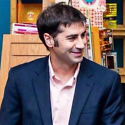
Aram Goudsouzian chairs the history department at the University of Memphis. His most recent book is Down to the Crossroads: Civil Rights, Black Power, and the Meredith March Against Fear.

